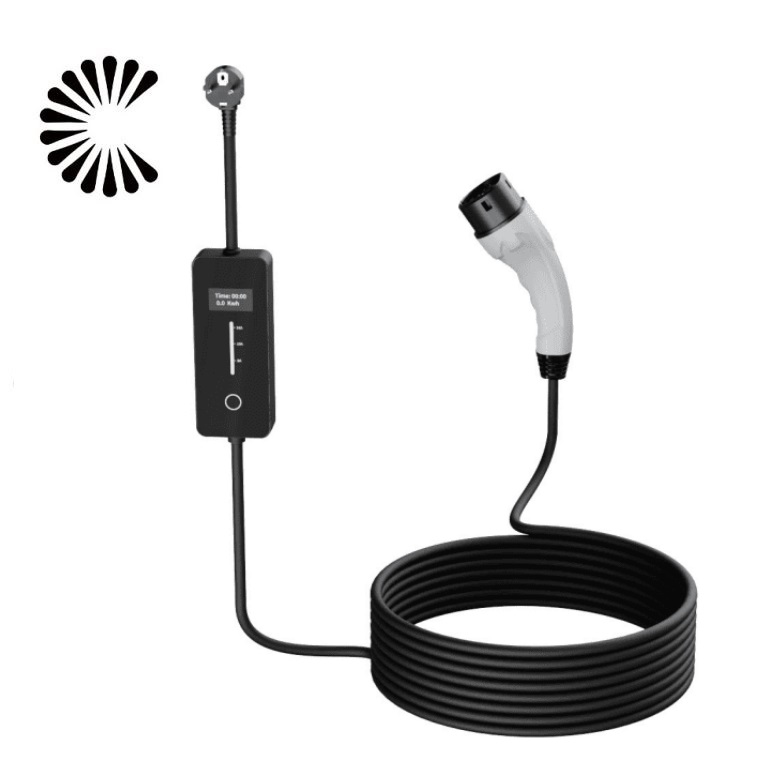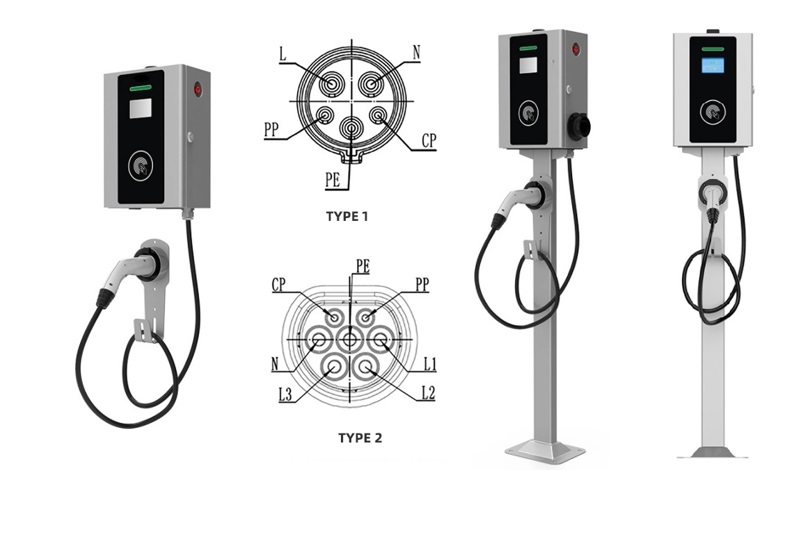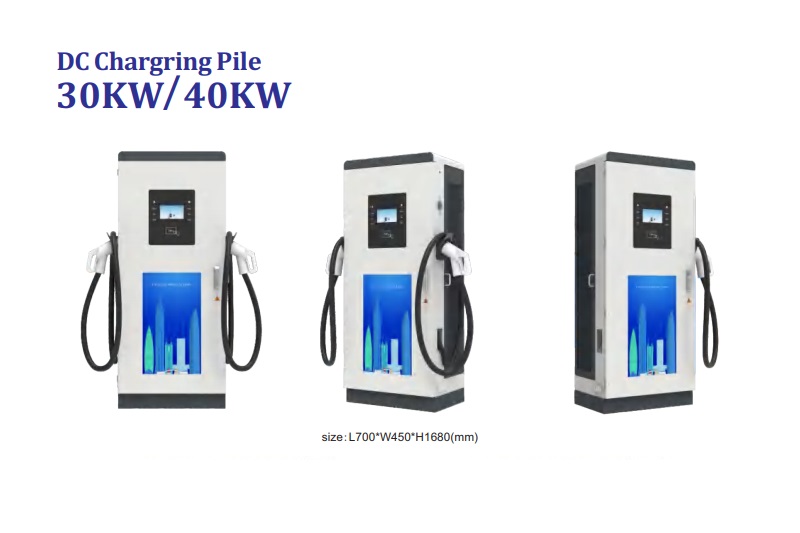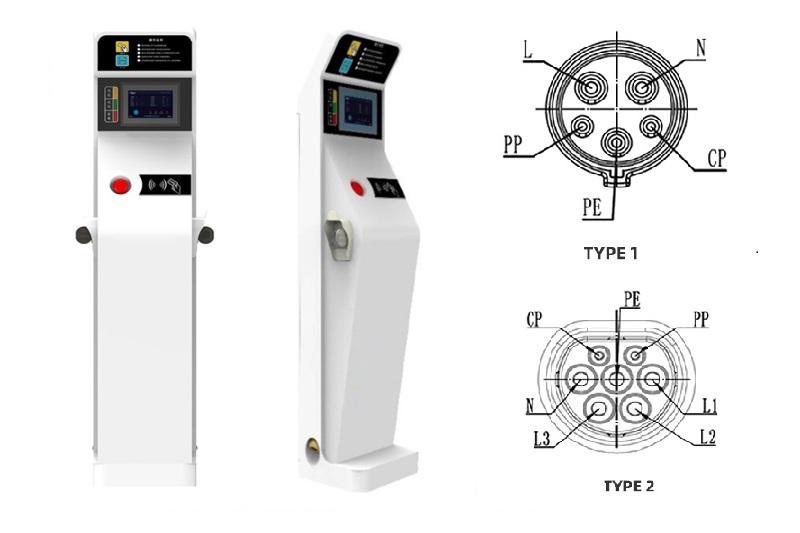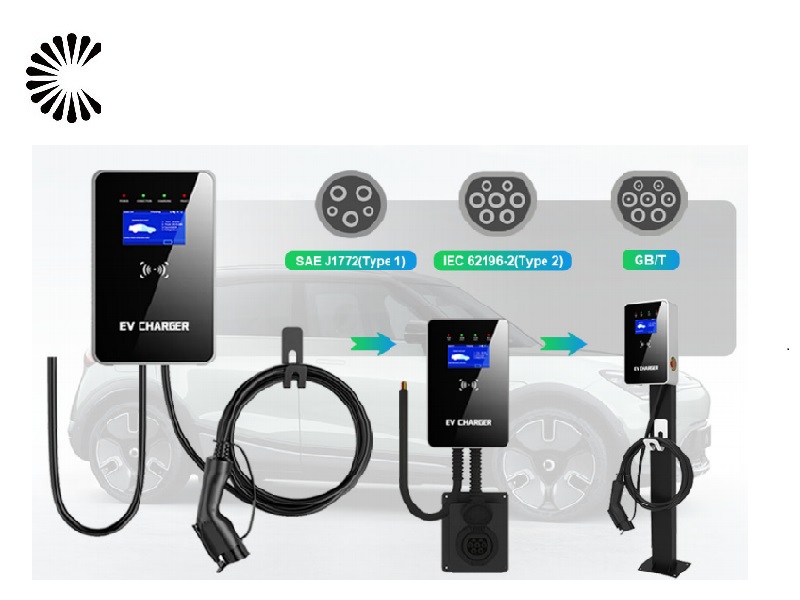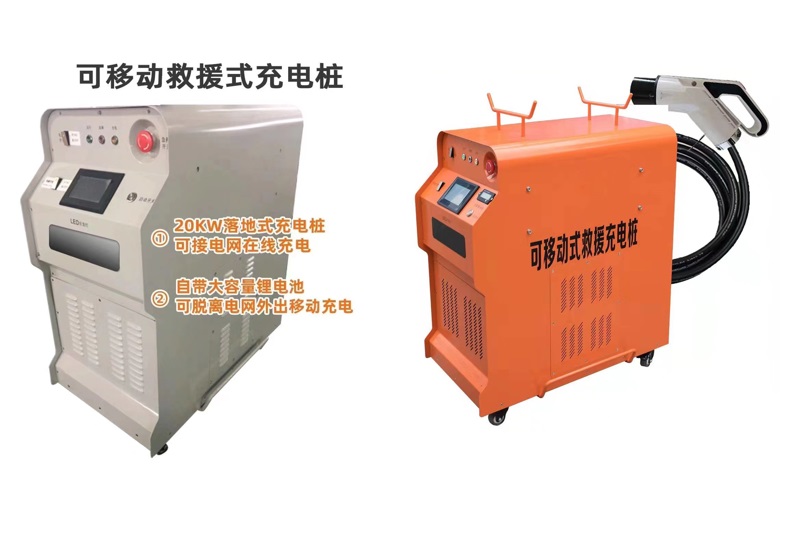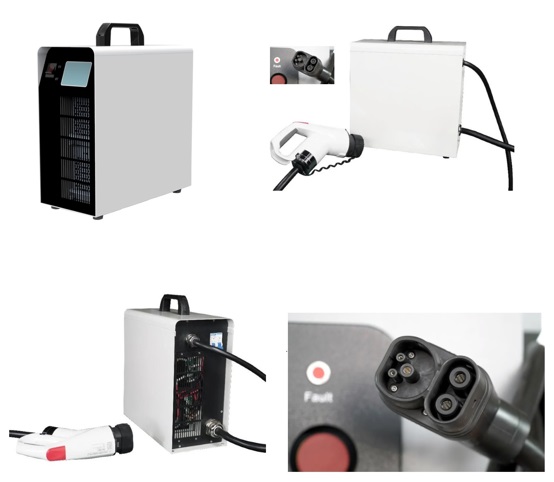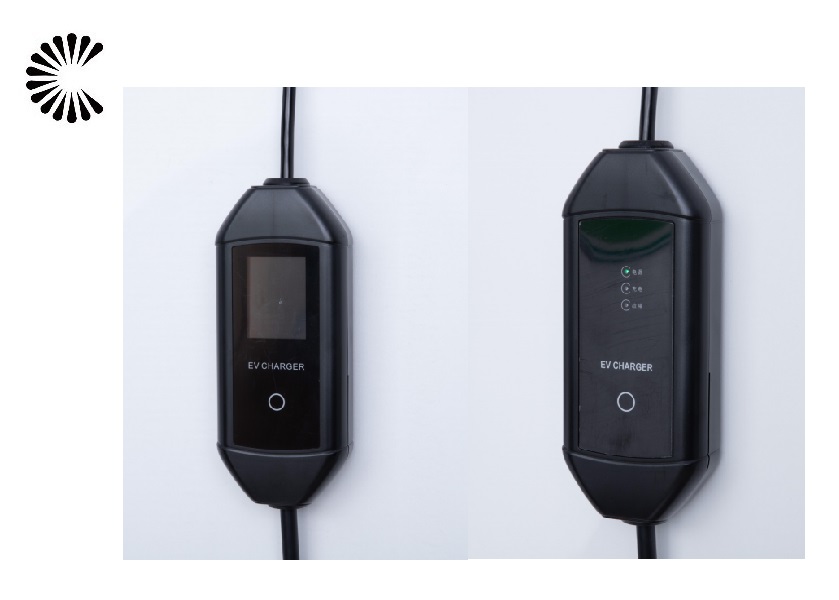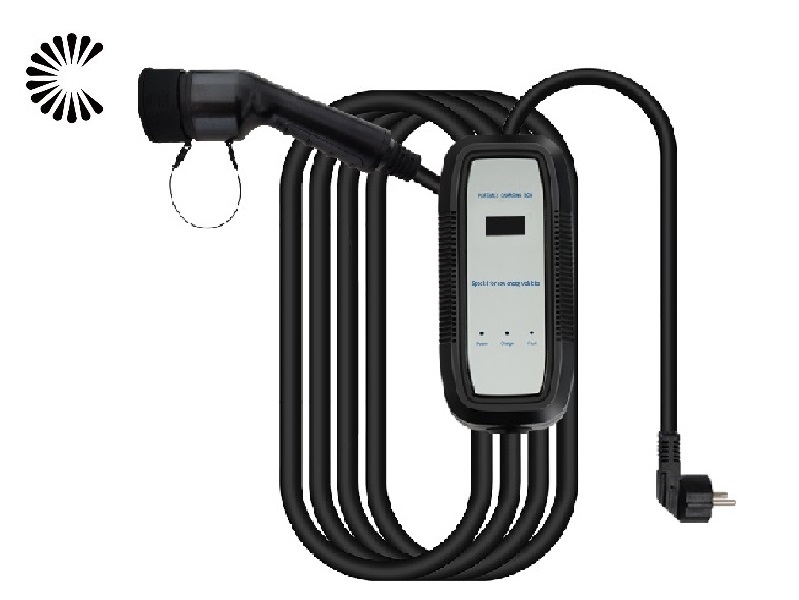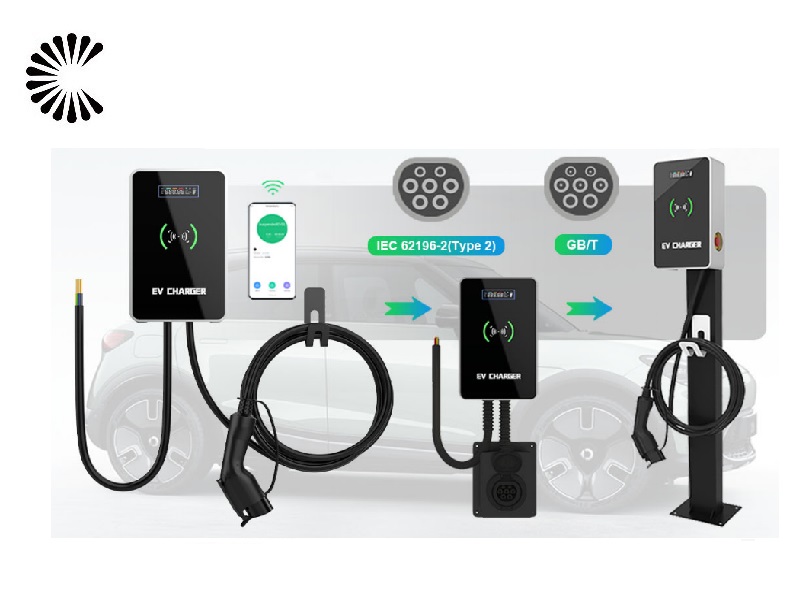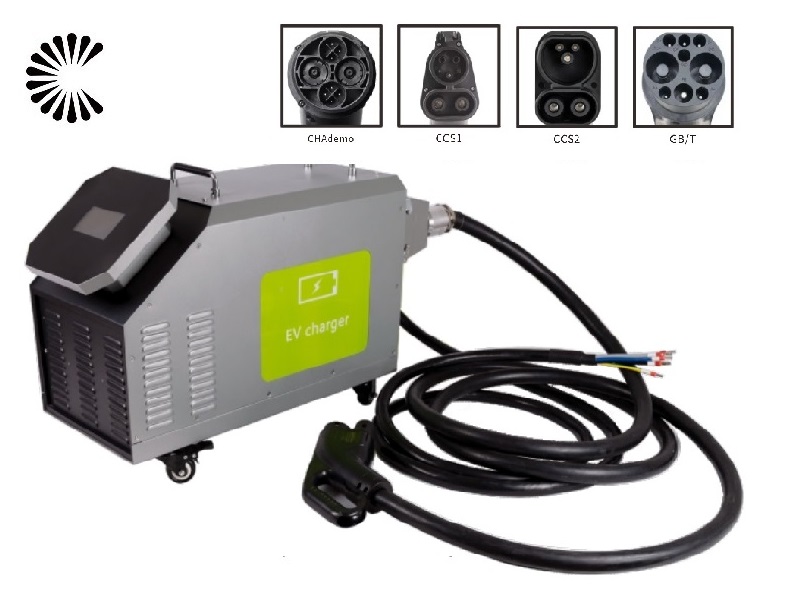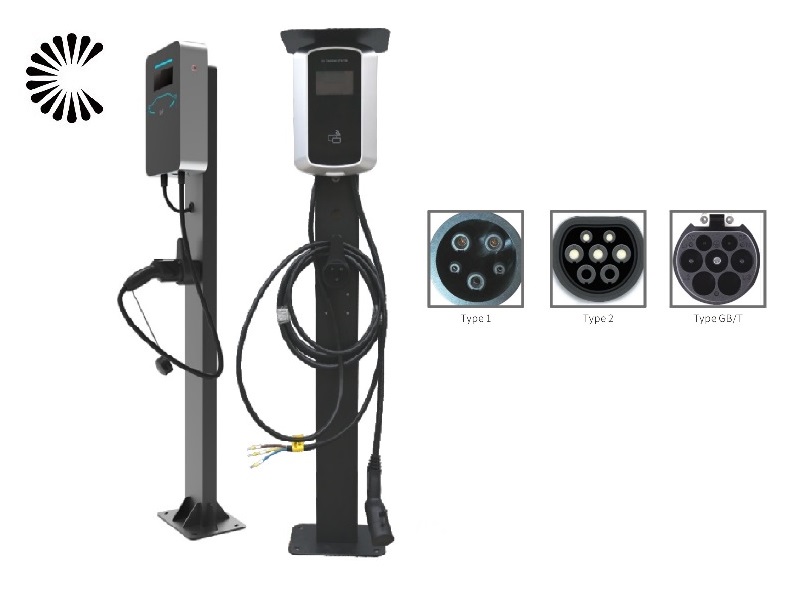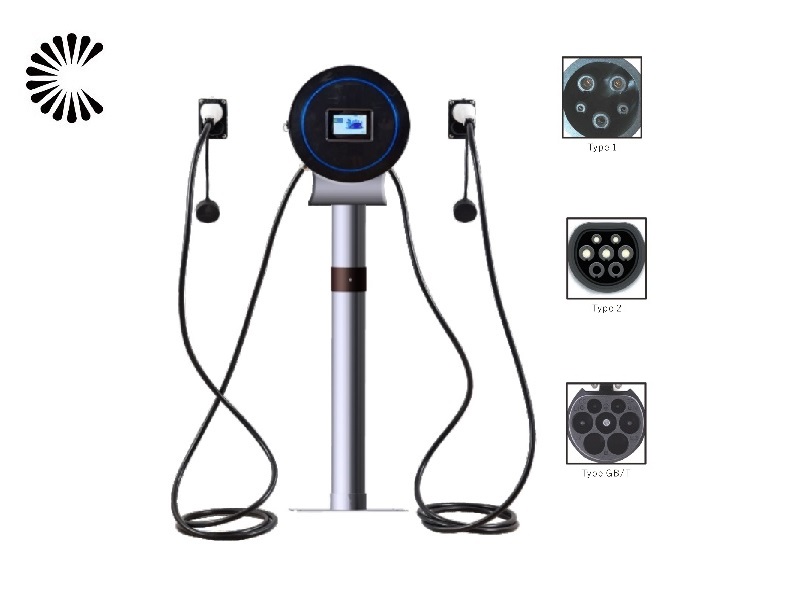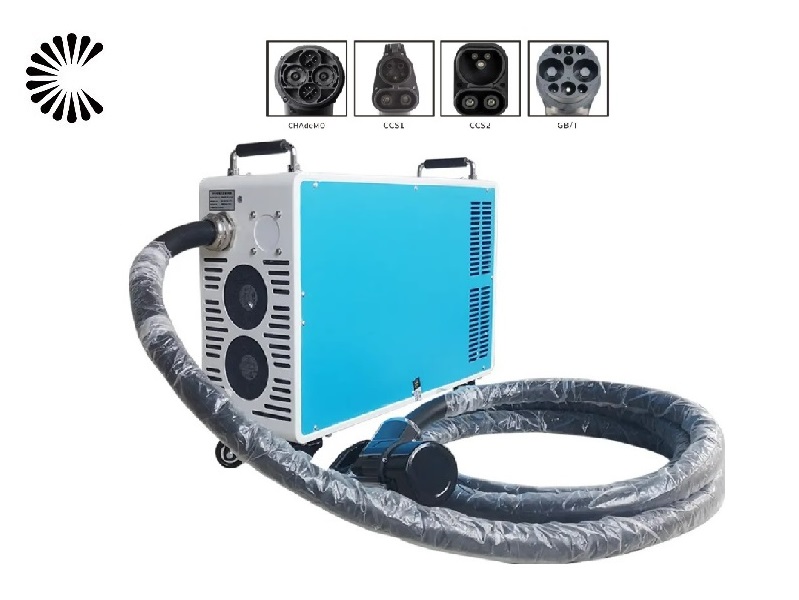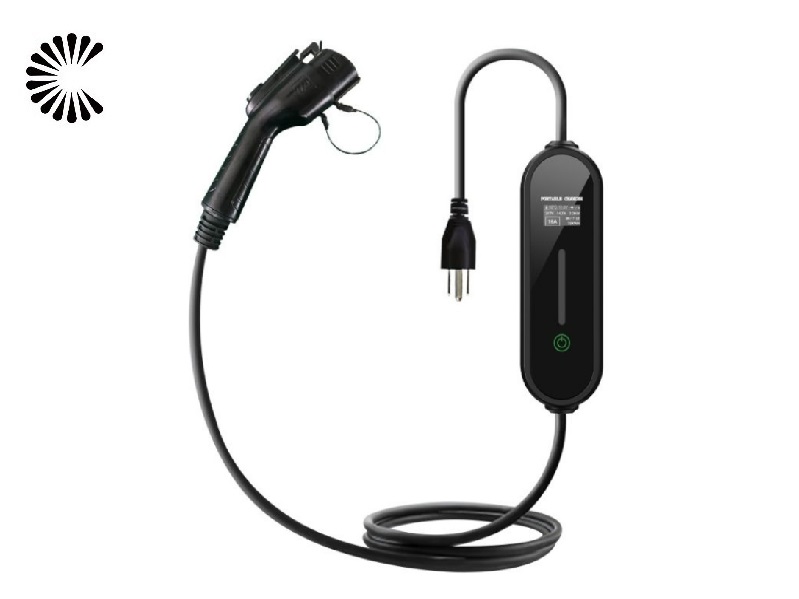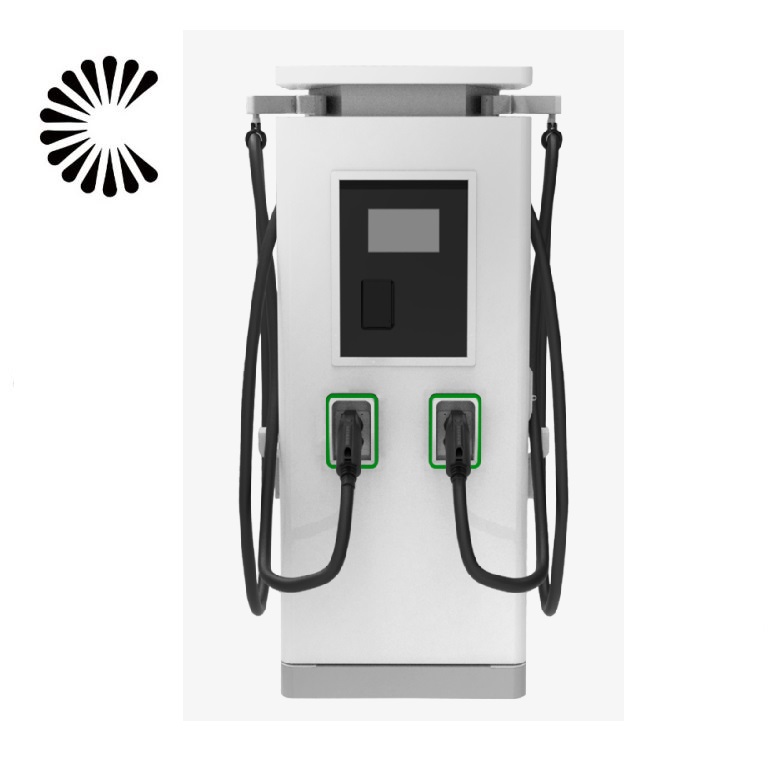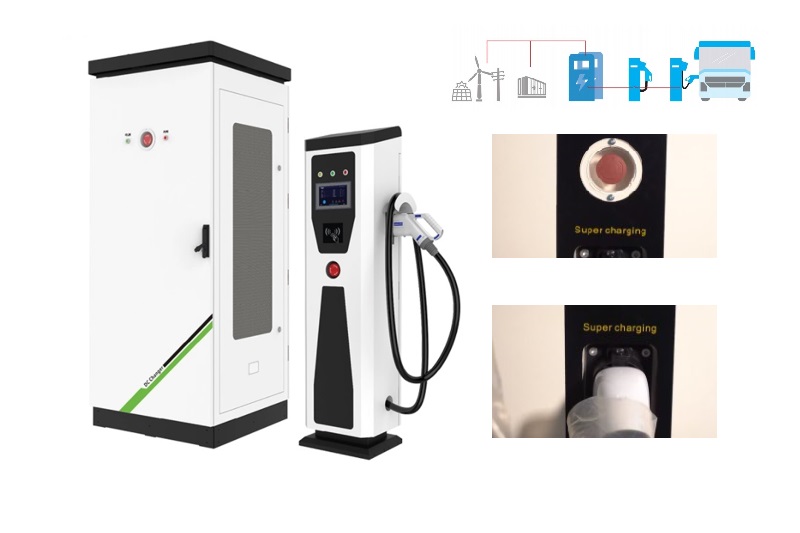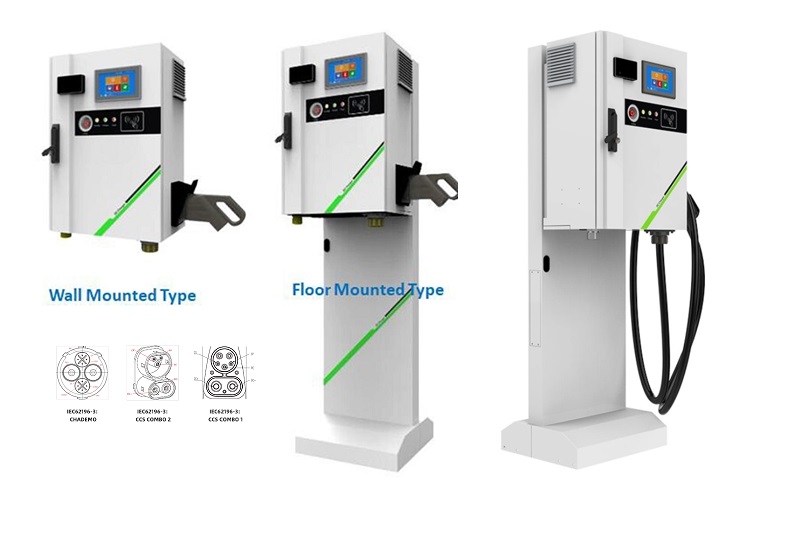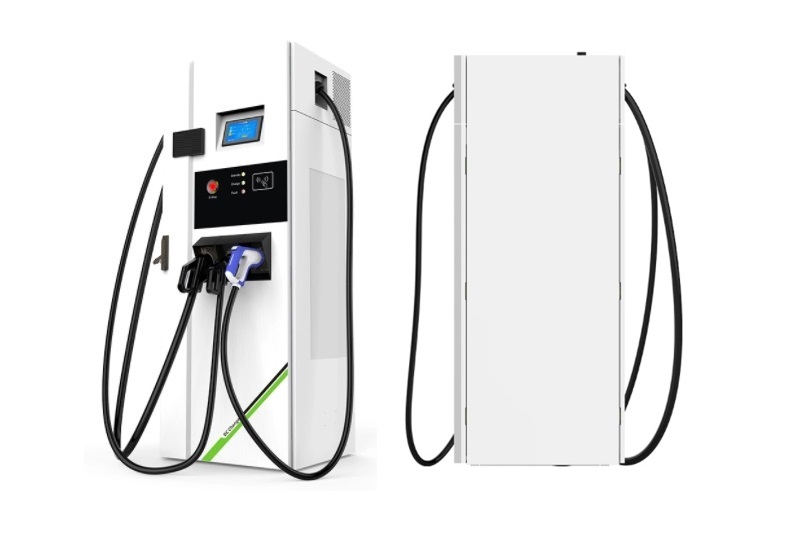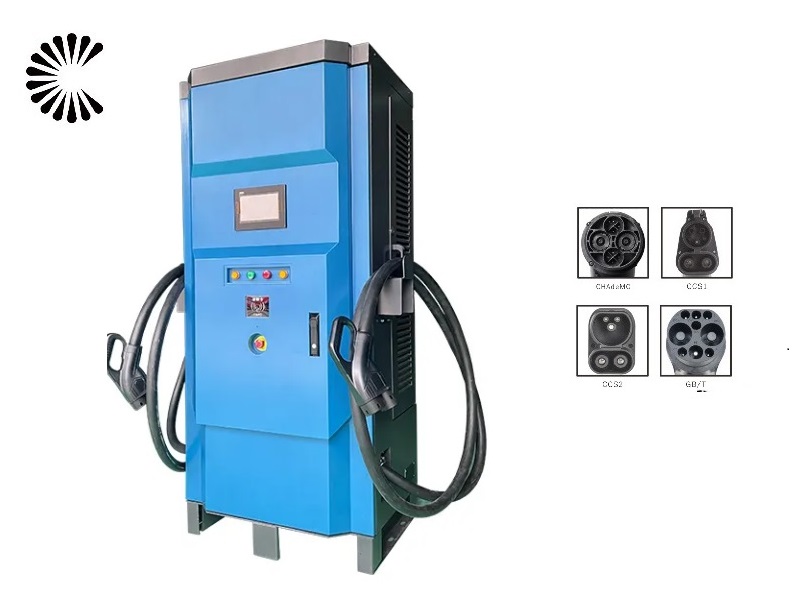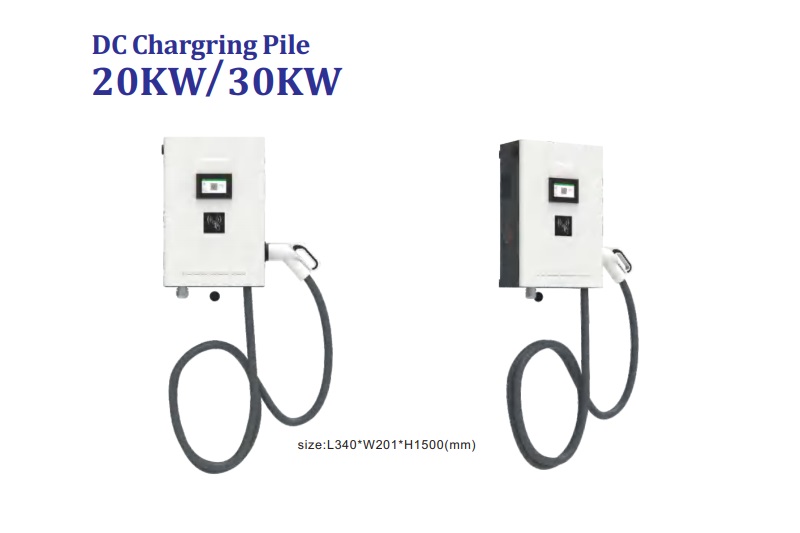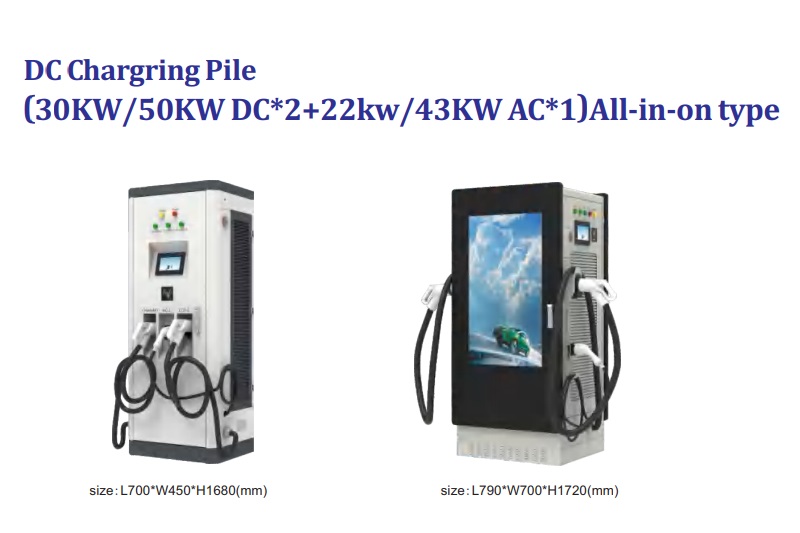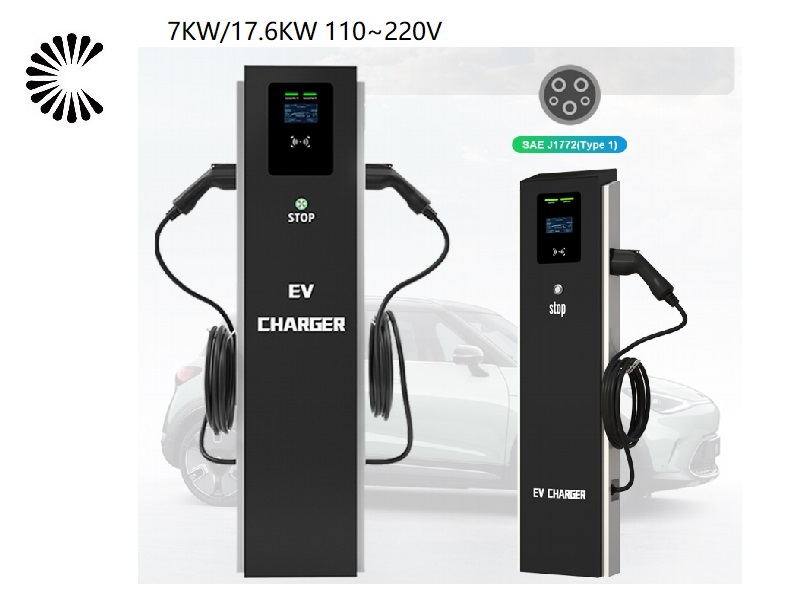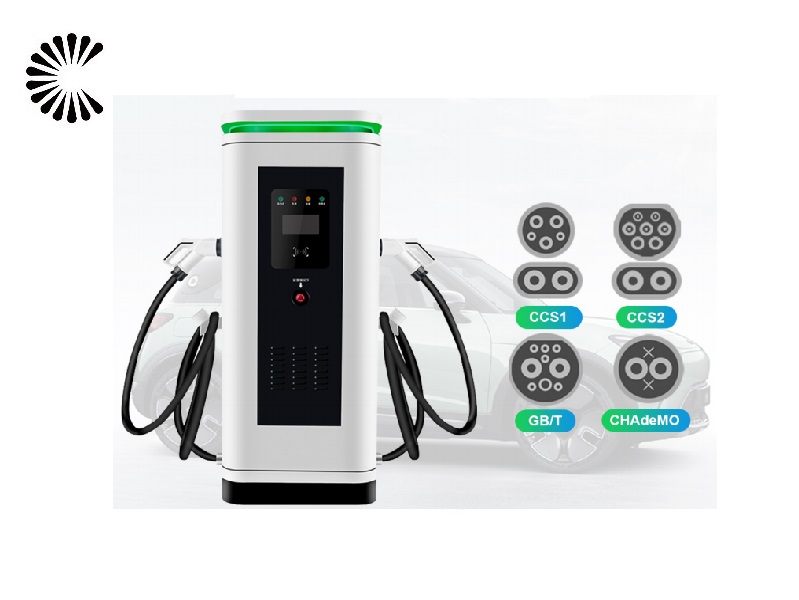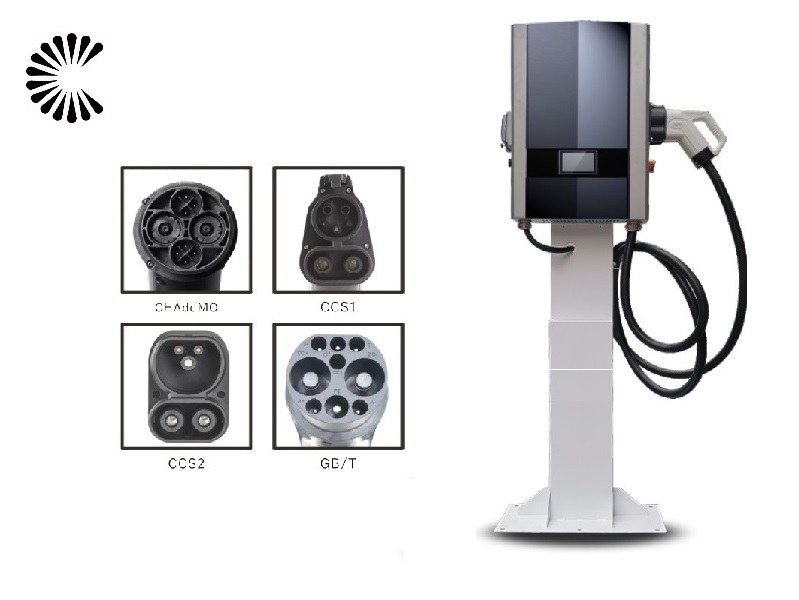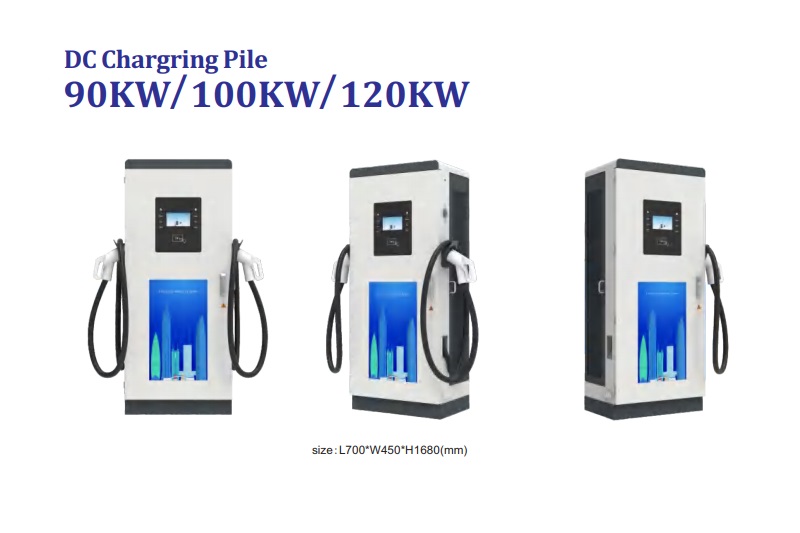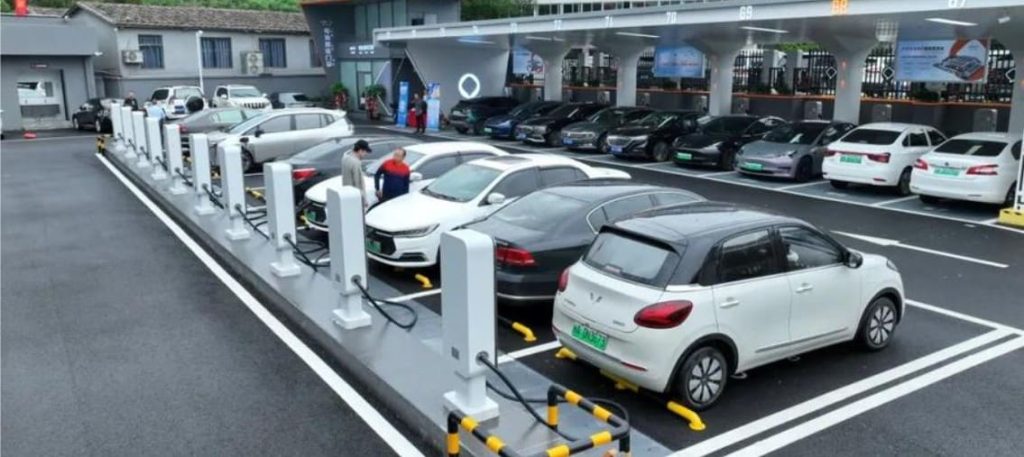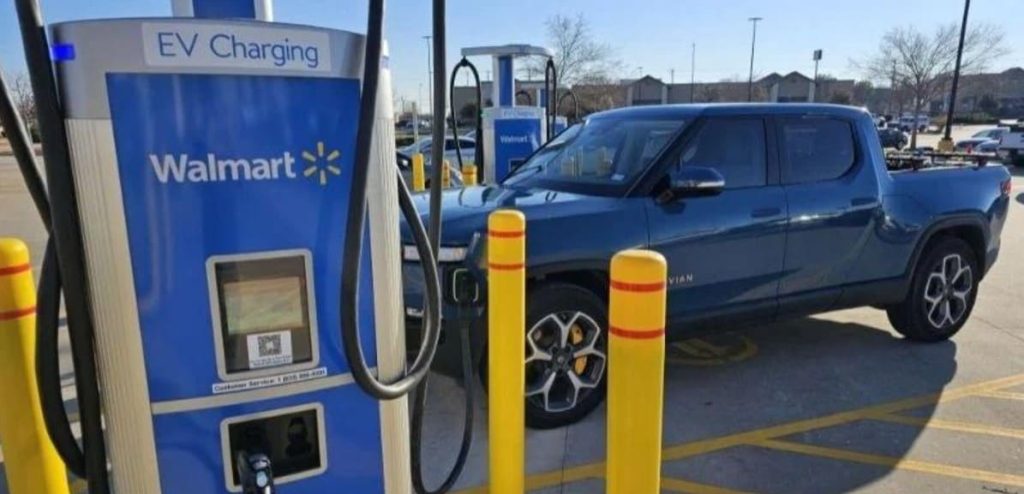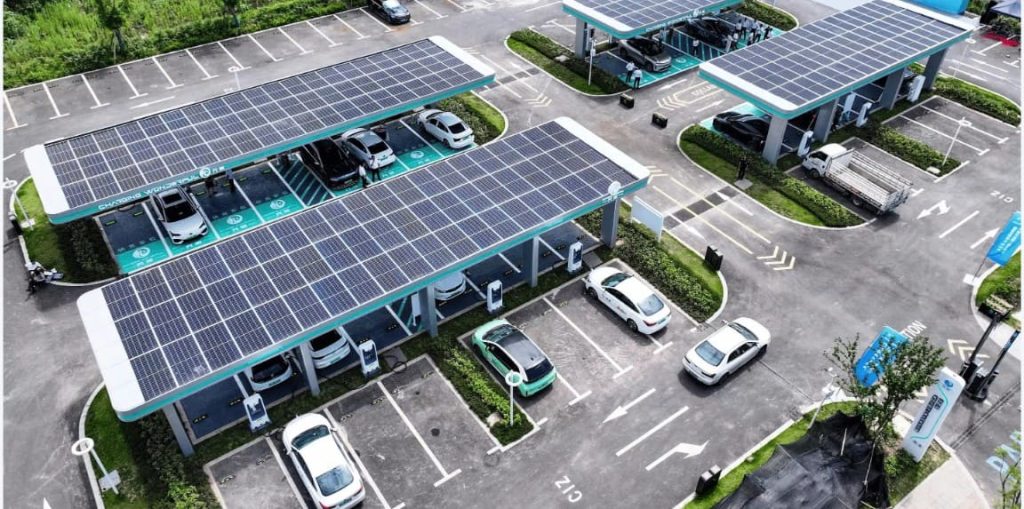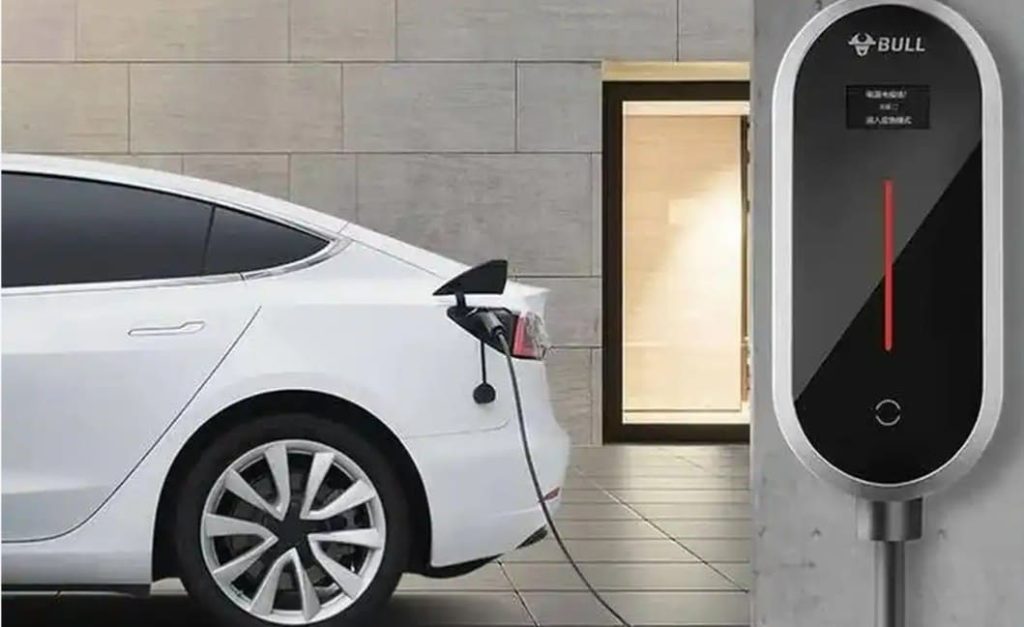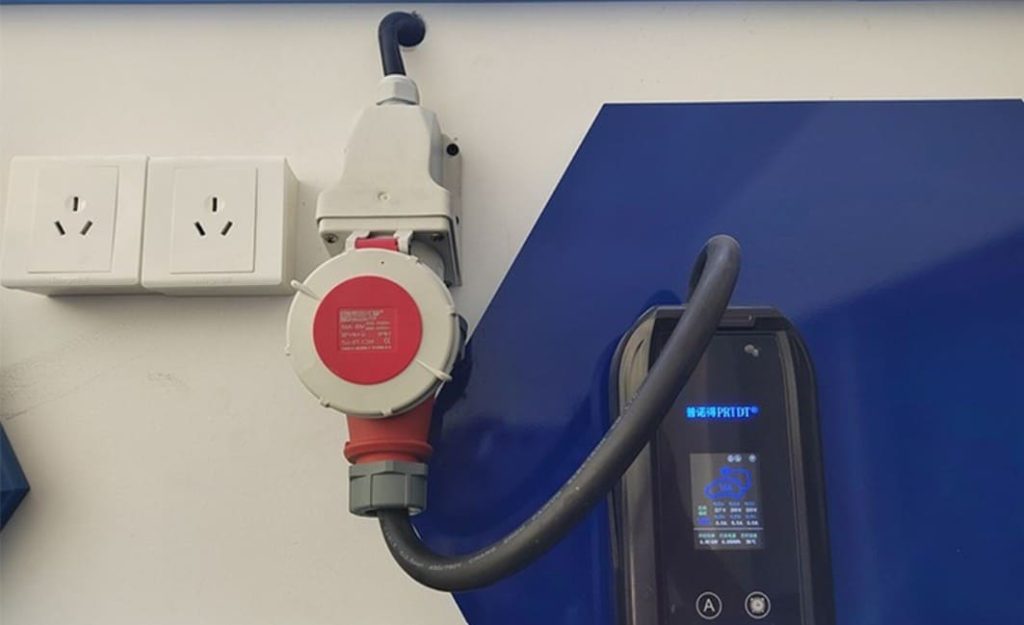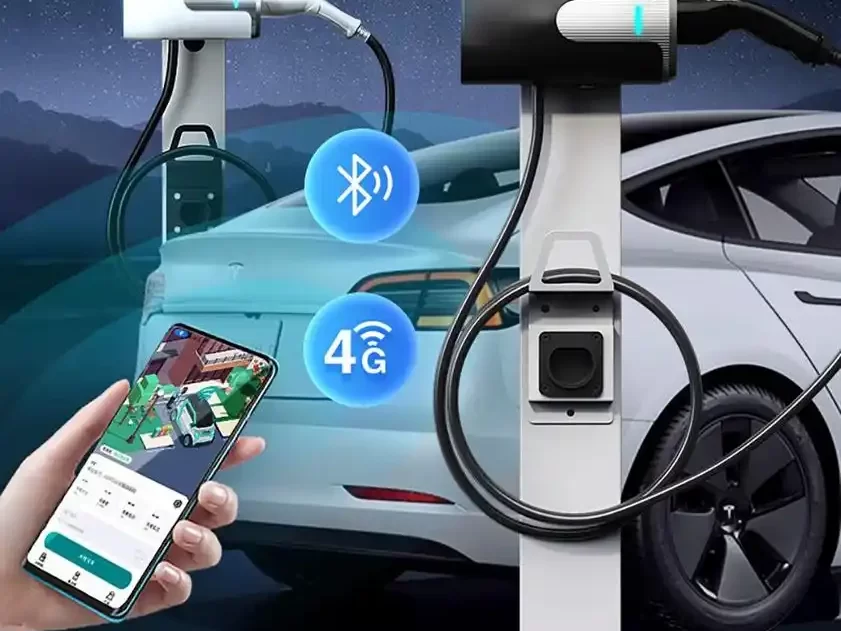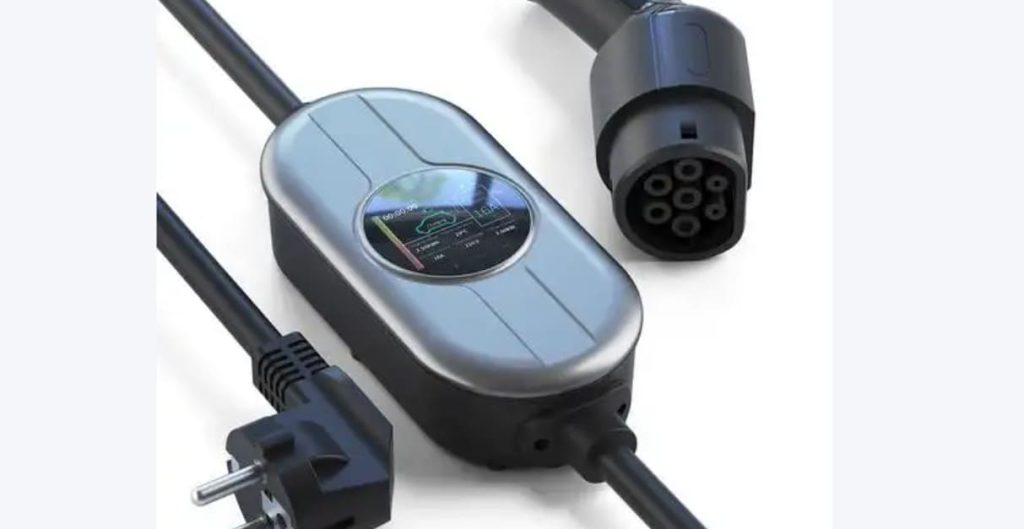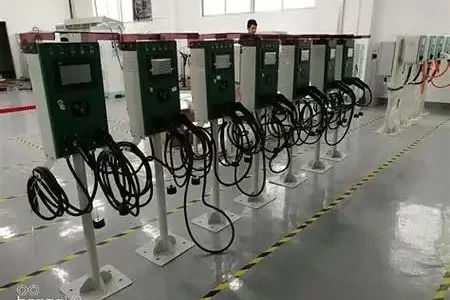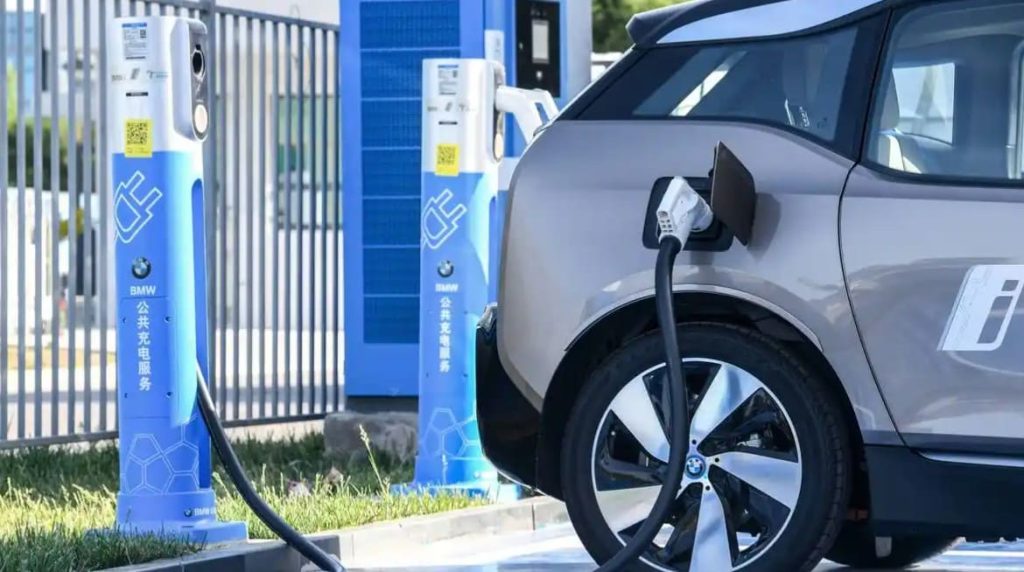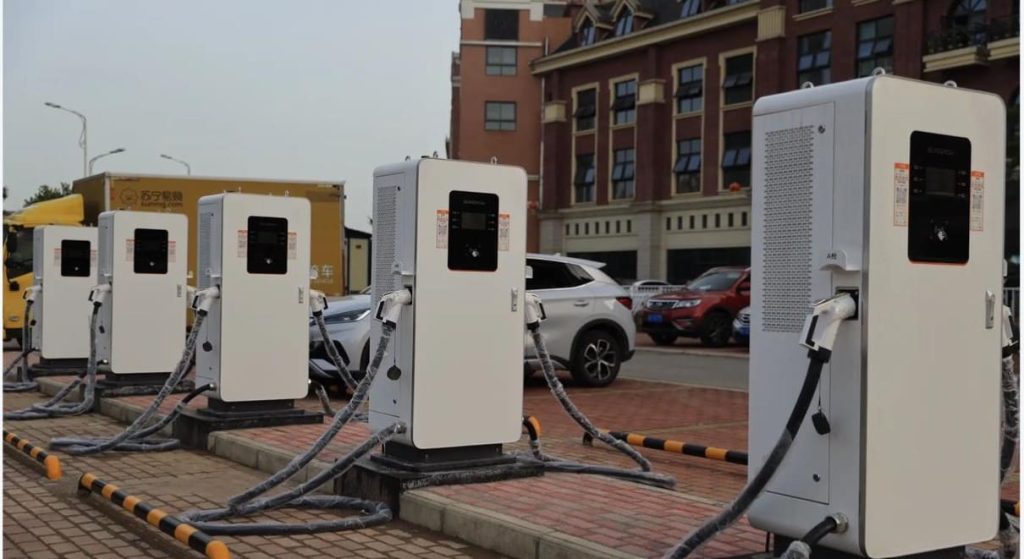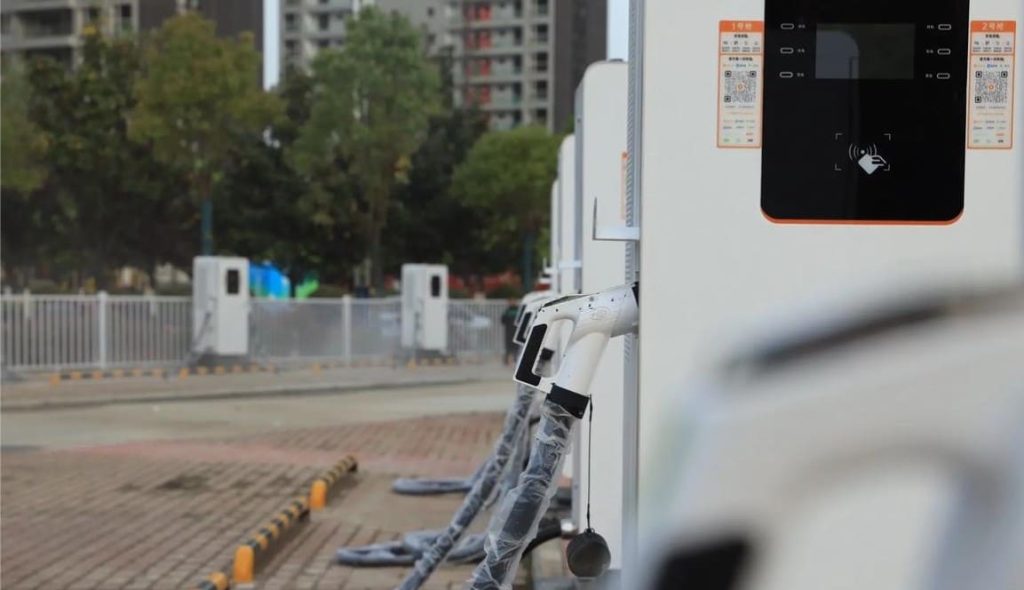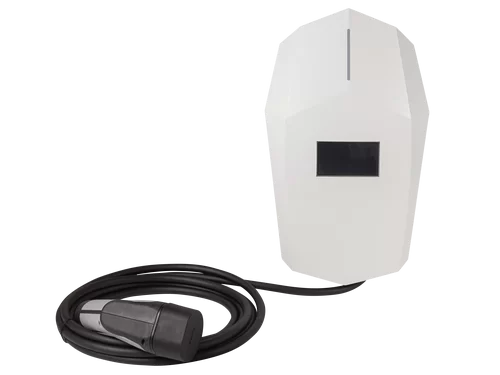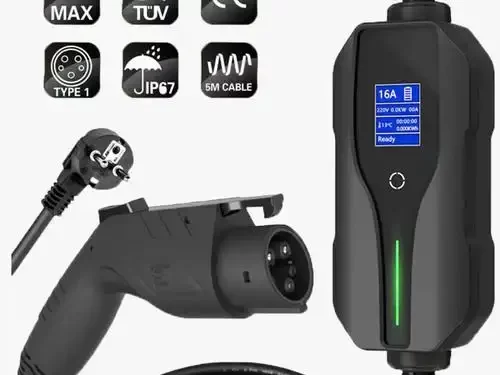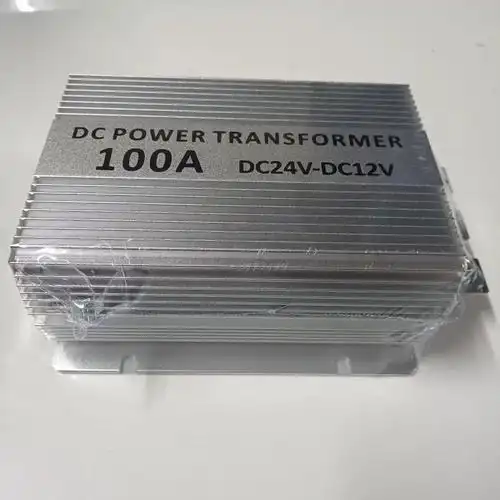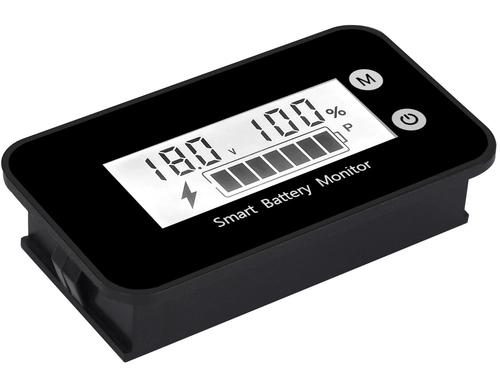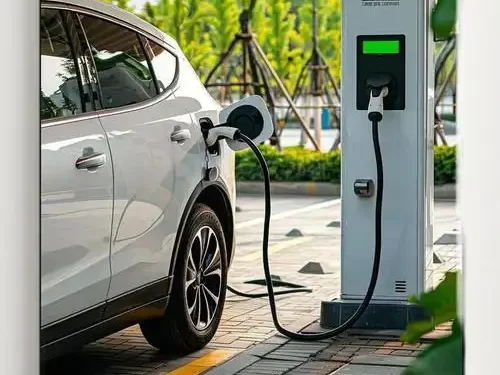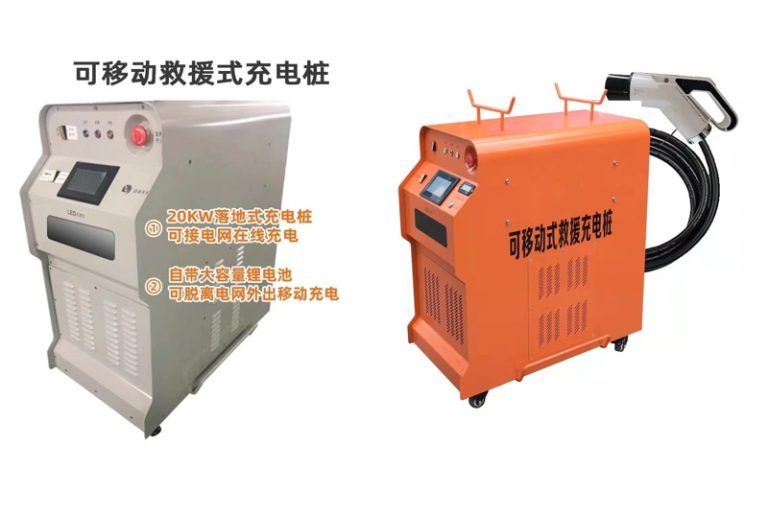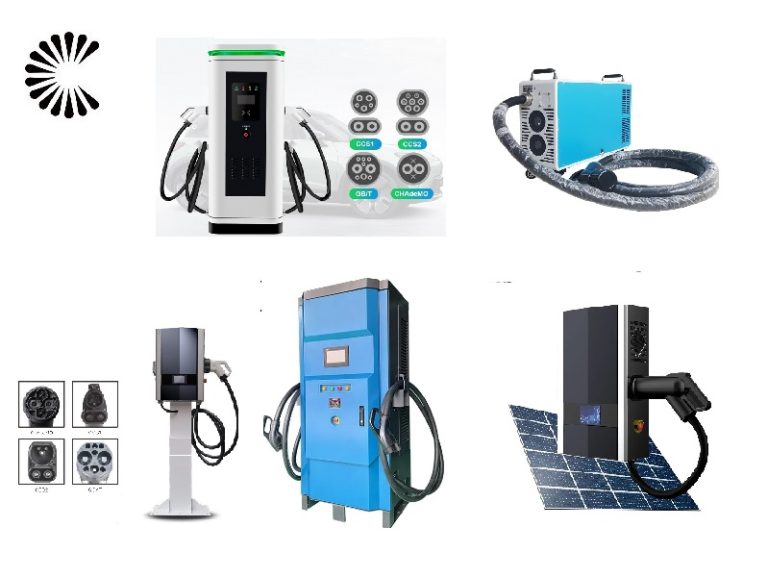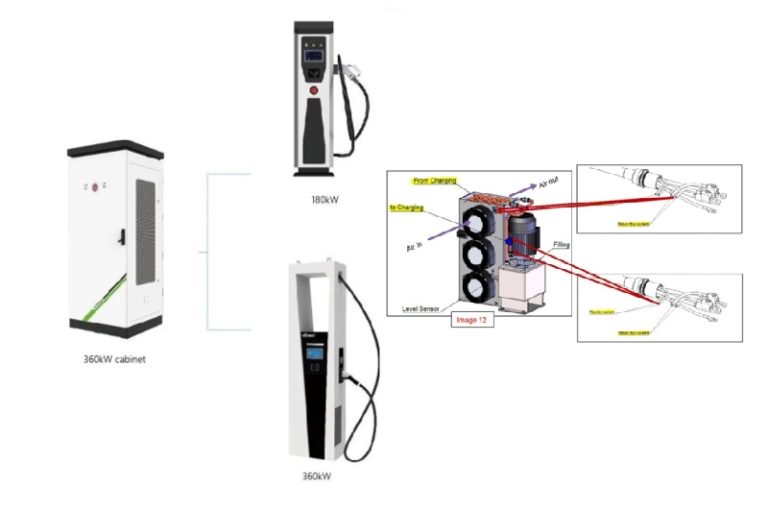EV Charger Level 2

electric bus charger, electric car charging station, public charging station, Apartment & condos, Auto dealerships, Cities & government, Entertainment
Fleets, Green buildings, Hospitality
Parking, Restaurants
Workplaces, University campuses
Hospitals
- Input Rating : AC220V±15%(ENC); AC240V±15%(ANSI); C380V±15%(ENC); AC240V±15%(ANSI); AC380V±15%
- Output: AC220V±15%(ENC); AC240V±15%(ANSI); AC380V±15%(ENC); AC240V±15%(ANSI); AC380V±15%
- Capacity: 3.5~22KW
What is level 1 level 2 and level 3 ev charger?
Electric cars are so ubiquitous now that you might be want to pick one out for yourself. Before you buy the electric car, you need to know all about electric vehicle charging. Here we compare the 3 levels and let you know the difference between them.
level 1 ev charger
Level 1 charging are more complicated than it is sounds like. When you buy an electric vehicle, it will include a charging adapter directly from the manufacturer. This adapter can plugs into any traditional 120V outlet in your home. This means that contrary to popular belief, you can start charging your car from day one, and no need to do any prior modifications to your electrical system.
The only major drawback to Level 1 charging is slow speed. Level 1 charging will help you recover about 5 miles of range per hour of charging. This will help you wake up the next day with about 50 miles of mileage. A range of 50 miles is more than enough for the daily use for common people. The benefit of Level 1 charging is that it charges your vehicle slowly, and you don’t have to worry about degrading the battery as a result of the constant high charging state.
level 2 ev charger
If you want your home electric vehicle to be ready with an L2 charger, you must hire a professional to install it.The fare is usually best for people with long commutes; Charging the vehicle to a nearly fully charged state is therefore a priority. Level 2 charging will restore the vehicle to near 100% full range, which is great if you drive more than 50 miles per day in an EV.
As mentioned earlier, to use a level 2 charger for your EV, you must consult a professional electrician to assist with the installation process. After the electrician installs the L2 charger and the necessary 240V socket, you are ready to charge your vehicle using the L2 charger.
Daily use of the L2 charger may degrade the battery’s performance as it reaches a nearly fully charged state with each charge.Your electric car is a means of transportation at the end of the day anyway, so don’t be afraid to charge the battery as you see fit.
level 2 ev charging station:
We can customize and provide whole EV charging Station solution for you specially according to your actual situation. Showcases:



cost of level 2 charger:
| AC/DC | Power | CE | Guns | EXW (USD/UNIT) | Quantity | Note |
| AC | 3.3KW | No | Single | US$125.00 | 1 | Type 2/Type 1 optional |
| AC | 7KW | No | Single | US$269.00 | 1 | Type 2/Type 1 optional |
| AC | 7KW | No | Single | US$368.00 | 1 | Type 2/Type 1 optional |
| AC | 7KW | Yes | Single | US$620.00 | 1 | Type 2/Type 1 optional |
| AC | 22KW | Yes | Single | US$790.00 | 1 | Type 2/Type 1 optional |
| DC | 30KW | NO | Single | US$6,400.00 | 1 | CCS2/Chademo optional |
| DC | 60KW | Yes | Two | US$19,124.00 | 1 | CCS2+CCS2/ CCS2+Chademo optional |
| DC | 120KW | Yes | Two | US$27,569.00 | 1 | CCS2+CCS2/ CCS2+Chademo optional |
| DC | 180KW | Yes | Two | US$34,325.00 | 1 | CCS2+CCS2/ CCS2+Chademo optional |
| DC+AC | 60KW | Yes | Three | US$19,538.00 | 1 | CHAdeMO(DC) & CCS(DC) & Type2(AC) |
| DC+AC | 120KW | Yes | Three | US$29,069.00 | 1 | CHAdeMO(DC) & CCS(DC) & Type2(AC) |
| DC+AC | 180KW | Yes | Three | US$36,153.00 | 1 | CHAdeMO(DC) & CCS(DC) & Type2(AC) |
cheapest level 2 charger:
We provide the best price of level 2 for our large and stable distributor. Please do not hesitate to contact with us for the cheaptest price.
level 3 ev charger
Level 3 charging, also known as DC quick charging, is the fastest way to charge your vehicle.The Hyundai IONIQ 5 is used as an example to show how fast a battery can be charged using L3.The L3 charger can charge the IONIQ 5 battery from 10% to 80% in about 18 minutes.It’s great, perfect for long trips that require hitting the road as soon as possible.
Ultra-fast charging like this can only be done using public chargers, so you won’t be able to install one of these in your home.And, to be honest, installing one of these chargers in your home is pointless.You’d better use the public one and go home.
The potential downside of using DC fast chargers may be that the battery degrades over time, but people rarely use these chargers and this should not be a problem.Therefore, if you need to use DC fast charger, please do not hesitate to charge.Dc fast chargers are becoming more common, and they will continue to proliferate as companies like Electrify America and Tesla invest in robust national charging networks.
And, if you want to charge your EV for free, many publicly available fast chargers are actually free.In fact, some EV manufacturers will even offer 2 years of fast charging for free.One such manufacturer is Audi, which allows free charging on the Volkswagen-owned Electrify America grid if you purchase a qualifying model.
L1 versus L2 versus L3 EV Charging: Which is best?
There is no clear answer to this question, because the truth is that all these chargers are just tools.What works for one person may not work for another.It all depends on the use case of each EV owner.If you’re someone who likes short commutes and rarely travels more than 50 miles on any given day, then a standard L1 charger will do just fine.
On the other hand, if you are a heavy user and travel more than 50 miles on any given day, you may want to consult an electrician to install a professional L2 charger in your home.If you are going to buy an EV and you know there are not enough L1 chargers, the most convenient way is to buy an L2 charger and install it before you actually go out and buy a new EV.
At the end of the charging spectrum, we have L3 charging, in which case you really don’t have to worry about any home installations.As mentioned earlier, you cannot install an L3 charger at home, so these chargers are only publicly available options that will assist you once you are on the road.If you’re planning a long trip, you’ll quickly become familiar with L3 chargers and how to use them.
Electric car charger suitable for all occasions
The availability of different charging speeds means more options for EV owners, which is always a good thing.As more and more electric vehicles are sold, charging stations will continue to replace traditional gas stations as the primary way to power your vehicle.
The big difference is that electric cars offer you the luxury of no longer having to stop for power.In theory, you can charge your vehicle at home every day for the duration of ownership.This is especially true if you have an L2 charger installed in your home.
Suitable for Car Brands:
Almost all the electric car, minibus, bus, van vehicles are suitable. Please contact with our sales team to confirm the right models.













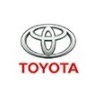




Application
They are suitable for occasions such as city special charging stations that provide charging for bus, taxi, public service vehicles, sanitation vehicles,logistics vehicles, etc.; city public charging stations that provide charging for private cars, commuter, bus; intercity highway charging stations and other occasions that need special DC fast charging. EV Bus station, Highway gas, sevice station, Parking garage, commercial operators, EV infrastructure operations and service providers, EV dealer workshops.

Here we list down some of application scenarios:
- Business organizations: Supermarket, Shopping mall, Hotel, Restaurant, Pharmacy
- Non-profit organizations: Airport, Railway / bus station, Exhibition, Museum, Hospital, School, Convention center, Lottery station, Government affairs center
- Financial organizations: Bank, Insurance company, Foundation, Security company
- Entertainments: Movie theater, Club, Bar, Salon, Gambling house
Suitable for Car Brands:
Almost all the electric car, minibus, bus, van vehicles are suitable. Please contact with our sales team to confirm the right models.


















Transportation
In the course of transportation, the charger should be packed firmly and intact ina solid wooden packing box, and the direction of loading and unloading should be marked. The charger should not be stored and transported upside down. In the course of transportation, corresponding tightening measures should be taken to avoid strong vibration and bump damage to the outer packaging of equipment. After arrival of the goods, user should check whether there is any damage. If there is any transport damage, user should consult with the transport party or our ompany to solve it. Check whether the contents in the box are in conformity with the packing list immediately after opening the box. The packaged equipment should be stored in the room where the relative humidity is less than 80% and the ambient air temperature is -20℃ to +55℃. Storage places should be dry, clean and airy, and can prevent the invasion of harmful gases. It is strictly forbidden to store corrosive articles in the same place. Note: It is strictly forbidden for non-professionals to disassemble equipment components.

Certification

Our Factory have certifications such as CE ISO Certifications. TUV /UL /CE Certificated for Overseas on cable and wire.
Why choose us
- Decades of Experiences: As a Chinese academy of sciences park high-tech enterprise and manufactory, our factory establised since 2002, with over 10 years factory development, our factory became famous brand in China. We believe new energy is the future, better to environment and more economical to our life. We are an integrated hi -tech electronic company. “Passion, Honesty, Sound service, Keen cooperation and Development” are our goals. We are here expecting friends all over the world!
- Various Charging Products: Full range of charging products as well as charger accessories. Provide full support to customer after-sale services. Most of the model of produts are able to be customized.
- For all the products that we shipped have 1 year warranty period as well as life time spare parts and accessories with competitive price .
- Accept customized OEM ODM products.
- Experienced foreign trade team to handle the shipment and after-sale services.
- Efficient and fast supply chain.
Showcase

Maintenance
- Charger body is easy to be fixed with anchor bolts to prevent it from inclining
and dithering due to external and human factors. - Shading and rainproof measures should be taken for chargers. It is suggested
to install shelters outdoors. - Check regularly whether all bolts in chargers are tightened, whether the connecting wires are loosened or not, or the connection is not firm, etc.
- Check for short circuit.
- Check whether the emergency stop button is available.
- Attention should be paid to lightning protection to ensure effective shielding
and reliable grounding of chargers. - When in use, the output voltage and current of the charger should be controlled within the nominal range to ensure that the charger works in the state of maximum efficiency.
- When the charger stops using, the charging output should be stopped first, then the cable should be wrapped and put back in place.
Note: During the transportation, the chargers should be packed firmly and the
direction of loading and unloading should be marked. It is forbidden to store and
transport chargers upside down. Corresponding tightening measures should be taken
to avoid strong vibration and turbulence damage to the outer packaging of equipment.
Factory Introduction
By virtue of high-quality products and services, our factory is one of China famous commercial ev charging station manufacturers. It has won many awards such as “Gazelle Enterprise”,” Excellent Software Demonstration Enterprise”, “Intelligent Manufacturing Pilot Demonstration Enterprise”, “Little Giant Enterprise in Science and Technology”. etc. It has also wined awards as “2017 Best Charging Solution Supplier”, “2018 Top 10 Charging Pile Brands in China Green Logistics Industry”,2019 Top 10 Charging Pile Brand Award, “2020 Top 10 Influential Brands in China Charging Facility Industry” and many other industry awards. Meanwhile, our commercial ev charging station factory has successfully passed the assessments as “safety production tandardization of the three-level enterprise”, “international ISO full series management system certification” and other authoritative certification.
| Certificate: | CE RoHS FCC Certificate | Warranty: | 12 Months |
| Input Voltage: | 110V-380V | Output Voltage: | 0-750V |
| Working Temperature: | -25℃-55℃ | Application: | Home Use/Commercial Use |
| OEM Service: | Color,Logo,Package, cable length, cable color | Supply Ability : | 4000 Piece/Pieces per Week |
| Packaging & Delivery: | Shanghai Port | Capacity | 4000 Piece/Pieces per Week |
| Lead Time: | Quantity(units) 1 – 5 5 working days | Factory Type | Supplier |
| Country / Region | China/Gungdong | Main Products | EV Charging Station, EV Charging Cable, EV Charging Connector |
| Factory employees | Over 100 people | Total Annual Revenue | Above US$100 Million |
| Main Markets | Europe South America | Connection: | type 1 or 2 plug |
| Mass production price | Negotiable | Charger Capacity | 3.5kw~480kw |
| Current | DC/AC | Plug type | Type 1,2,CHAdemo/CCS-2/CCS-1 |

ac or dc ev charger – difference between ac and dc
ac ev charger
The Alternating Current is Alternating Current; DC is Direct Current. “Alternating current” is the most popular transmission mode in the general power grid nowadays. Because of its characteristics and low consumption. “Dc” is the current in the battery. It is not suitable for remote transmission, but the current state must be DC at the critical moment of charging. The power is transmitted to the home or public charging station by AC alternating current. And then it converted into DC direct current by the small “AC-DC converter (rectifier)” which attached to the car into the battery. Therefore, we often say that AC slow charge and DC fast charge in charging are actually just a state of current.


Dc charging pile station
dc charger
- AC charger is slower than DC Charger.
- Assplication scope: AC EV Charger can be used home and public, DC EV Charger used most in public.
- AC Charger is smaller and cheaper than DC EV charger.
- AC Charger power between 2KW to 43KW while DC EV Charger between 50KW to 150KW.
FAQ (Click to see more FAQ)
What is a level 2 charger for EV?How Many Amps Do You Need For A Level 2 Charger?
Level 2 charging refers to the voltage (240 volts) in an EV charger. Level 2 chargers come in a variety of current intensities, typically ranging from 16 amps to 40 amps. The two most common level 2 chargers are 16 amp and 30 amp, also known as 3.3kW and 7.2kW respectively.
What is the difference between Level 2 and 3 EV Chargers?
The level 1 voltage is 120 volts, and charging at this level usually takes more than 8 hours for a small electric vehicle, or more than a day for a car with a larger battery capacity, such as the Tesla Models. This level is generally for home use only and is charged overnight at night. In fact, this level is unique to the United States, because the home voltage in the United States is 120 volts, so it is not applicable to Chinese users, unless we are preparing to produce electric vehicles for export to the United States, in general we don’t have to pay attention to it.
The level 2 is 240 volts. At this level, the average electric car takes between four and eight hours to charge. This level generally requires the use of specialized charging posts equipped with coils capable of carrying currents from 20 to 80 amps.Because the household voltage is 220 volts AC, the charging piles used in production are also adjusted accordingly.
The first two levels of input and output are alternating current, while the third level is the familiar DC fast charge.Its input voltage is generally between 480 and 600 volts alternating current, output voltage is direct current. This DC quick charge can charge the battery to 80% full capacity in 30 minutes, but not so fast if it continues to charge.The input voltage of DC charging piles in our country is generally used in the three-phase four-wire AC 380 Volt.
Recommend AC dC charging at home
AC DC Chargers are Ideal for owners, businesses, and municipalities interested in EV charging solutions for employees, customers, and residents. It provides a complete set of features that station owners need to manage all aspects of the EV driving experience. These models are ideal for multi-family home fleet charging station charging and personal charging.With speed, durability and flexible configuration options, charging stations are sure to meet your fleet or multi-family charging needs.
Recommend type 2 ac charger for ev
EV Chargers Level 2 Product for Sale (Click to Get the Price List):
Introduction of EV Charger Level 2:
What is a Level 2 EV charger?
An EV Charger Level 2 is an electric vehicle charging device that provides a faster and more efficient way to recharge electric vehicles. Unlike the standard Level 1 charger, which uses a regular household outlet, a Level 2 charger requires a higher-powered 240-volt power source.
Level 2 chargers offer several advantages over Level 1 chargers. First and foremost, they significantly reduce charging time, making it much quicker to replenish the EV’s battery. While Level 1 chargers may take many hours to fully charge an electric vehicle, Level 2 chargers can do the same job in just a fraction of that time.
Due to their faster charging speed, Level 2 chargers are often favored by EV owners who need to charge their vehicles more quickly, especially those with longer commutes or those who want to recharge while running errands or during short stops.
To use a Level 2 charger, EV owners usually need to get it professionally installed by a qualified electrician, ensuring that the electrical infrastructure can handle the higher power requirements. Additionally, Level 2 chargers may require a specific connector that matches the EV’s charging port, so it’s essential to verify compatibility before use.
Overall, Level 2 EV chargers are a convenient and practical option for charging electric vehicles efficiently, allowing EV owners to spend less time waiting for their cars to recharge and enabling them to enjoy the benefits of electric mobility more conveniently.
Application of EV Charger Level 2:
The application of a EV Charger Level 2 is widespread and essential for facilitating the adoption of electric vehicles in various settings. Here are some key applications of Level 2 EV chargers:
- Residential Charging: EV Charger Level 2 are commonly installed at homes for electric vehicle owners. They offer faster charging compared to Level 1 chargers, allowing EV owners to recharge their vehicles overnight or during extended periods when the car is not in use. This ensures that the EV starts each day with a full battery, making it convenient for daily commutes and local travel.
- Workplace Charging: Many businesses and employers install Level 2 EV chargers in their parking lots or garages to support their employees who drive electric vehicles. Workplace charging encourages EV adoption and provides a convenient option for employees to recharge their cars while they work, extending their EV’s daily range.
- Public Charging Stations: EV Charger Level 2 are commonly found in public charging stations across urban areas, shopping centers, and other public places. These charging stations cater to EV owners who need to top up their batteries during their daily activities, such as shopping, dining, or running errands.
- Fleet Charging: Level 2 chargers are used in fleets of electric vehicles, such as those used by taxi companies, rideshare services, delivery services, or government agencies. Fleet operators rely on Level 2 chargers to efficiently recharge their vehicles between shifts or during downtime, ensuring continuous operation and reducing downtime.
- Multi-Unit Dwellings (MUDs): EV Charger Level 2 are installed in multi-unit residential buildings, such as apartments or condominiums, to serve EV owners living in these communities. They provide individual charging points for residents who may not have access to personal garages or driveways.
- Tourist Destinations: In areas frequented by tourists, such as national parks or popular tourist spots, Level 2 chargers are installed to support EV drivers visiting these locations. Tourist destinations with EV Charger Level 2 attract eco-conscious visitors and promote sustainable tourism.
- Highway Rest Stops: Along major highways and interstates, EV Charger Level 2 are often set up at rest stops. These fast-charging options allow EV drivers on long-distance trips to recharge their vehicles quickly and continue their journey with minimal delays.
Overall, Level 2 EV chargers play a crucial role in expanding the accessibility and convenience of electric vehicle charging. They offer faster charging times, making electric vehicles more practical and appealing to a broader range of drivers. As the electric vehicle market continues to grow, the application of Level 2 chargers will become even more vital in supporting sustainable transportation solutions worldwide.
Advantages of EV Charger Level 2:
The advantages of an EV Charger Level 2 are significant and contribute to the widespread adoption of electric vehicles. Here are some key benefits:
- Faster Charging Times: One of the primary advantages of EV Charger Level 2 is their faster charging capability compared to Level 1 chargers. Level 2 chargers can recharge an electric vehicle’s battery in a fraction of the time it takes with a standard household outlet. This allows EV owners to get back on the road more quickly, making electric vehicles more practical for daily use and longer trips.
- Convenience and Flexibility: With faster charging, EV Charger Level 2 offer greater convenience and flexibility to electric vehicle owners. Drivers can recharge their cars during regular stops, like grocery shopping or dining out, without needing to plan extended charging sessions.
- Suitable for Daily Commutes: EV Charger Level 2 are well-suited for daily commuting needs. They can fully charge an EV overnight, ensuring that the vehicle starts each day with a full battery, providing peace of mind and range confidence for daily travel.
- Supports High EV Usage: In scenarios where multiple electric vehicles are in use, such as in commercial fleets or multi-unit residential buildings, Level 2 chargers can handle higher charging demands efficiently. This scalability is vital for supporting the growth of electric mobility.
- Workplace and Public Charging: EV Charger Level 2 are commonly found in workplaces and public charging stations. At workplaces, they encourage employees to switch to electric vehicles by providing convenient charging options during work hours. In public charging stations, Level 2 chargers cater to the needs of EV owners while they are out and about.
- Easy Installation: Level 2 chargers are relatively straightforward to install, especially when compared to more powerful Level 3 chargers. They usually require a dedicated 240-volt electrical circuit, making them compatible with existing residential and commercial electrical infrastructure.
- Reduces Range Anxiety: Faster charging times provided by EV Charger Level 2 help reduce range anxiety—the fear of running out of charge during a journey. EV owners can recharge quickly and confidently, knowing they can cover their required distances without stress.
- Energy Efficiency: Level 2 chargers are designed to be more energy-efficient than Level 1 chargers, which means less energy is wasted during the charging process, contributing to overall energy conservation.
- Supports Future EV Models: As electric vehicle technology advances and battery capacities increase, EV Charger Level 2 will remain relevant and effective for charging future EV models.
In summary, EV Charger Level 2 offer faster charging times, greater convenience, and enhanced flexibility, making electric vehicles more practical and attractive to a broader audience. These advantages play a crucial role in promoting the transition to sustainable transportation and reducing reliance on traditional fossil fuel-powered vehicles.
Disadvantages of EV Charger Level 2:
While EV Charger Level 2 have several advantages, they also come with some limitations and disadvantages. Here are some of the key drawbacks associated with EV Charger Level 2:
Cost of Installation:
Compared to standard Level 1 chargers, EV Charger Level 2 require professional installation and a dedicated 240-volt electrical circuit. This installation process can be more costly, especially if electrical upgrades are necessary to support the higher power requirements of Level 2 charging.
Limited Charging Speed:
While EV Charger Level 2 are faster than Level 1 chargers, they still have limitations in terms of charging speed compared to Level 3 (DC fast) chargers. For long-distance travel or urgent recharging needs, Level 2 chargers may not be as suitable due to their relatively moderate charging rates.
Availability and Infrastructure:
While EV Charger Level 2 is growing, it may still be less accessible in certain areas compared to Level 1 chargers. In remote regions or less developed areas, finding Level 2 charging stations can be challenging, potentially causing inconvenience for EV owners on extended trips.
Charging Time for Larger Batteries:
As electric vehicles with larger battery capacities become more common, EV Charger Level 2may take a considerable amount of time to fully charge these vehicles. This can be a disadvantage for EV owners with larger batteries who require more extended charging sessions.
Not Suitable for Emergency Charging:
In emergency situations or when the battery is nearly depleted, EV Charger Level 2 may not be the best option due to their relatively slower charging speed. Level 3 (DC fast) chargers, which offer rapid charging, are more suitable for urgent or time-sensitive situations.
Shared Charging Locations:
In public charging stations with multiple Level 2 chargers, the charging speed may be affected if several vehicles are charging simultaneously. As charging points are shared, each EV’s charging rate could decrease, leading to longer waiting times.
Compatibility and Connector Types:
Some EV Charger Level 2 may have different connector types, leading to potential compatibility issues with certain electric vehicle models. EV owners may need to carry specific adapters or cables to ensure their vehicle can be charged at various charging stations.
Energy Source and Grid Constraints:
The effectiveness of EV Charger Level 2 is also dependent on the local energy grid’s capacity. In areas with limited electrical infrastructure, charging multiple EVs simultaneously could strain the power grid and impact overall charging efficiency.
Despite these disadvantages, EV Charger Level 2 continue to be a valuable and widely used charging solution, offering a practical balance between charging speed and accessibility for various charging scenarios. As electric vehicle technology advances, and charging infrastructure improves, these limitations are expected to be addressed, making EV Charger Level 2 an even more attractive option for electric vehicle owners.
two depends on your charging needs, the range of your electric vehicle, and how quickly you want to recharge it.
Related Products
Related Articles
Our EV Charger Factory Introduction:
| Business Type: | Manufacturer/Factory | Main Products: | EV Charger |
| Number of Employees: | 100 | Year of Establishment: | 2014.05 |
| Production Capacity | 5000Set/Year | After-sales Service: | Technical Support; on-line teach lessons |
| R&D Capacity: | ODM, OEM | Annual Output Value: | US$5 Million – US$10 Million |
| No. of R&D Staff: | 5 | No. of Production Lines: | 6 |
ChargersGO Factory is a professional manufacturer for EV Charger. Our main product including slow charger, fast charger, DC EV Charger, AC EV Charger, commercial EV Charger, charger for home, EV charger level 1, level 2 and level 3 etc. All products in accordance with the China GMP design requirements. And also we have other certifications.
Business Philosophy
“Quality is the main policy of sales” and “integrity is the principle of success” are the business philosophy of our people. We carry out one-year warranty, lifelong maintenance service, with technical consultation and other services, and long-term supply of equipment. Welcome new and old customers to negotiate cooperation!
Production Process:
Producing an Electric Vehicle (EV) charger involves a series of carefully orchestrated steps to ensure the charger’s quality, safety, and performance. The production process typically consists of the following key stages:
- Design and Engineering: The process begins with the design and engineering phase. Skilled engineers and designers work together to create a blueprint for the EV charger. They consider factors like power capacity, safety features, charging protocols, and compatibility with various electric vehicle models.
- Component Sourcing: Once the design is finalized, the production team sources the necessary components and materials for the charger. These components can include circuit boards, connectors, casing materials, power modules, and safety components. Manufacturers often prioritize high-quality, reliable components to ensure the charger’s longevity and performance.
- Circuit Board Assembly: The core of an EV charger is its circuit board, which controls the charging process and ensures safe operation. Surface Mount Technology (SMT) machines precisely place electronic components onto the circuit board. Skilled technicians may also perform manual assembly for certain components that require extra care.
- Casing and Enclosure: The charger’s casing is an essential part of its design, providing protection from external elements and ensuring user safety. The casing is usually made of durable materials, such as aluminum or robust plastics. Injection molding or other manufacturing techniques are used to create the charger’s enclosure.
- Quality Control: Throughout the production process, rigorous quality control checks are conducted to identify any defects or inconsistencies. Each charger is tested at various stages to ensure its functionality and safety compliance. Quality control specialists meticulously examine the assembled units to meet industry standards.
- Safety Testing and Certifications: Before releasing the chargers to the market, they undergo rigorous safety testing and certifications. These tests may include electrical safety tests, thermal tests, and environmental tests to ensure the charger can operate reliably in different conditions.
- Final Assembly and Packaging: After successfully passing all tests and certifications, the chargers undergo final assembly and packaging. They are carefully packaged and prepared for distribution, along with user manuals and any necessary accessories.
- Distribution and Installation: The chargers are then distributed to retailers, charging network operators, or directly to end customers. Upon receiving the chargers, they are installed at charging stations or provided to electric vehicle owners for home charging.
- Customer Support and Maintenance: Once in use, manufacturers provide ongoing customer support and maintenance services to ensure the chargers continue to perform optimally. This includes troubleshooting assistance, firmware updates, and periodic inspections.
By following a well-structured production process and adhering to strict quality standards, manufacturers can produce high-quality EV chargers that contribute to the growth of electric mobility and a greener, sustainable future.

Certifications:
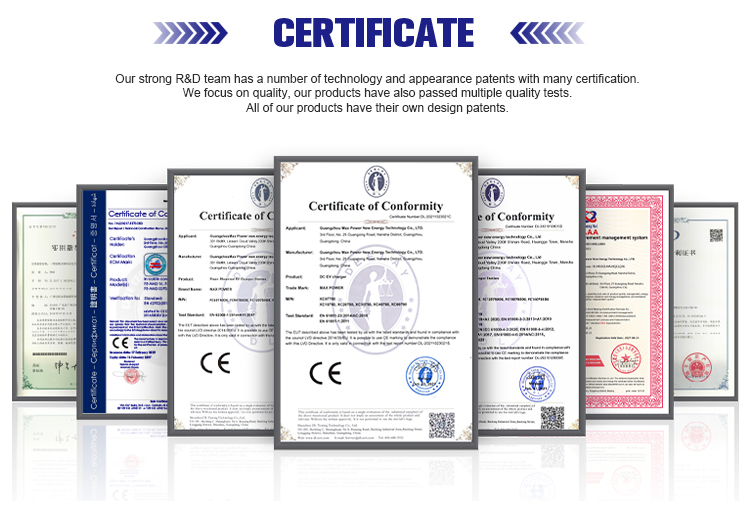
Small EV Charger Packing:
Retail Small EV Charger shipped with express.
Wsholesale Small EV Charger packed with export fumigation-free wooden cases, goes with bulk shipment or in container.
When packing small EV charger for sea shipment, it is important to take measures to ensure that the machines are protected from damage during transit. Here are some general steps that a manufacturer may follow when packing small EV charger for sea shipment:
- Clean and dry the charger: Before packing, the charger should be thoroughly cleaned and dried to prevent any moisture or debris from causing damage during transit.
- Disassemble the machine: If possible, the charger should be disassembled into its component parts to reduce its overall size and make it easier to pack.
- Wrap the charger in protective material: The charger should be wrapped in a layer of protective material, such as bubble wrap or foam, to protect it from scratches and impact during transit.
- Place the charger in a sturdy box: The wrapped charger should then be placed in a sturdy box that is appropriate for the size and weight of the machine. The box should be made of durable material, such as corrugated cardboard or plywood, and should be able to withstand the rigors of sea transit.
- Add packing material: The box should be filled with packing material, such as packing peanuts or air pillows, to provide cushioning and prevent the machine from shifting during transit.
- Seal the box: The box should be securely sealed with high-quality packing tape to prevent it from opening during transit.
- Label the box: The box should be clearly labeled with the charger’s name, weight, and any other relevant information, as well as the destination address and contact information.
Overall, the goal is to pack the small chargers in a way that will protect it from damage during transit and ensure that it arrives at its destination in good condition. It is important to follow proper packing procedures and use high-quality packing materials to minimize the risk of damage during sea shipment.
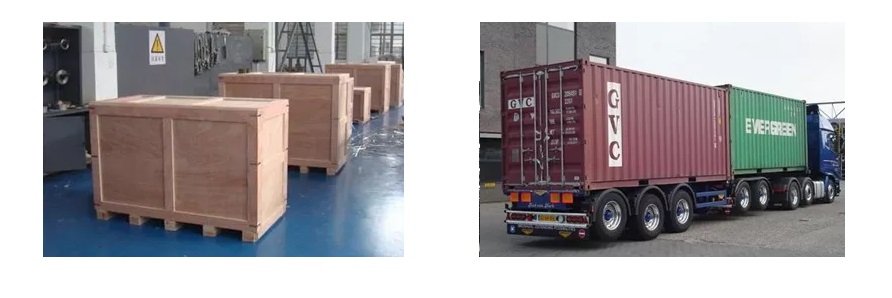
Large EV Charger Packing:
Packing a large EV charger for sea shipment can be a complex and challenging task. However, with careful planning and attention to detail, it is possible to pack a large machine for sea shipment in a way that will ensure that it arrives at its destination in good condition. Here are some general steps that a manufacturer may follow when packing up a large machine for sea shipment:
- Clean and prepare the machine: Before packing, the EV charger should be thoroughly cleaned and prepared. All fluids, such as oil or coolant, should be drained, and any loose or detachable parts should be removed.
- Disassemble the machine: If possible, the machine should be disassembled into its component parts to reduce its overall size and make it easier to pack. Each part should be carefully labeled and numbered to ensure that it can be easily reassembled at the destination.
- Protect delicate parts: Delicate or fragile parts should be wrapped in protective material, such as bubble wrap or foam, to protect them from damage during transit.
- Build a custom crate: A custom crate should be built around the machine to provide a secure and sturdy enclosure. The crate should be made of durable material, such as plywood, and should be designed to fit the machine snugly. The crate should also include braces or supports to prevent the machine from shifting during transit.
- Add cushioning material: The crate should be filled with cushioning material, such as packing peanuts or air pillows, to provide extra protection and prevent the machine from moving or shifting during transit.
- Securely fasten the machine: The EV charger should be securely fastened to the crate to prevent it from moving or shifting during transit. This may involve using straps, bolts, or other fasteners to hold the machine in place.
- Seal and label the crate: The crate should be securely sealed with high-quality packing tape, and should be clearly labeled with the machine’s name, weight, and any other relevant information. The destination address and contact information should also be clearly marked on the crate.
Overall, packing a large EV charger for sea shipment requires careful planning and attention to detail. It is important to use high-quality materials and follow proper packing procedures to ensure that the EV charger arrives at its destination in good condition. A professional packing and shipping company may be consulted to ensure that the machine is properly packed and prepared for sea shipment.


Applications of EV Charger Level 2
It is appplicable for all kinds of charing protocols, Suitable for all kinds of new energy vehicles on the market,Applicable to a variety of electric vehicles, electric buses,Forklift,golf cartsightseeing cartractor, etc.
| CHAdeMO | Nissan leaf&NV200, KIA soul, CITRONEN C-Zero%Bendingo, Peu geot On, Mitsubishi l-Mev&outlander, Geely TX electric Taxi,Zero Motorcycles, Tesla Mode S(need adapter) |
| CCS | BMW i3,VW e-golf&e-up, Jaguar ipace, Tesla model 3, Hyundai ioniq&kona, Audi e-tron, OPEL ampere e, Chevrolet spark, Geely TX electric Taxi,Ford focus, Renault new Zoe |
| GB/T | BYD, BAIC,Chery, Geely, Aion S, MG, Xiao Peng, JAC, Zotype etc. |
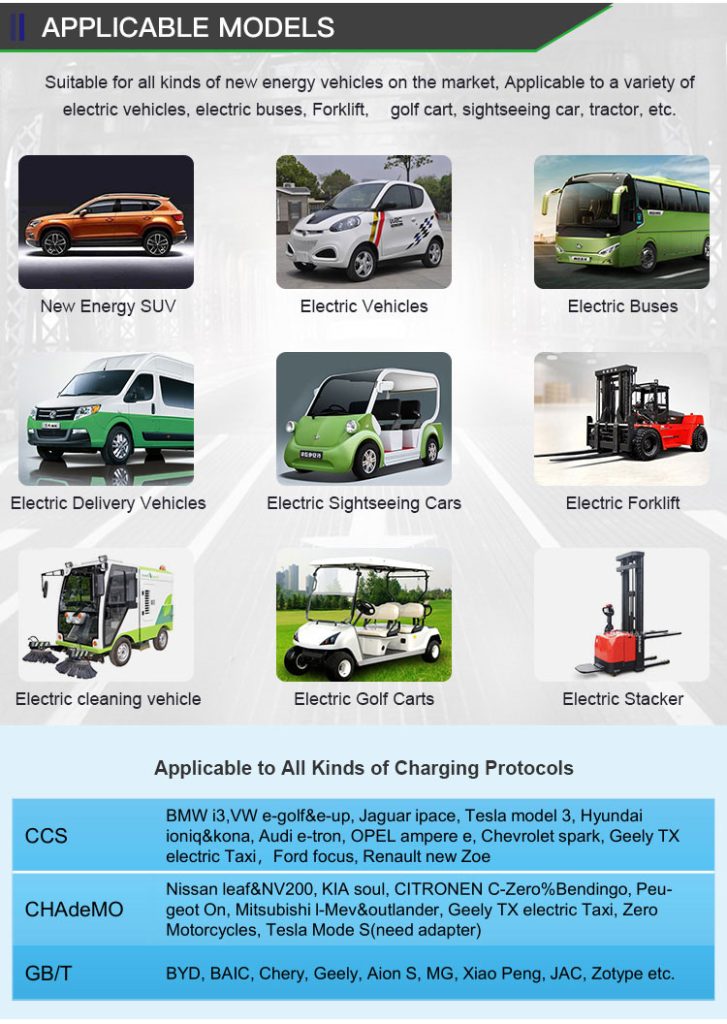
Contact Us
Frequently Asked Questions (Click for More RFQ)
-
Are you a factory or trading company?
We are a professional manufacturer of new and sustainable energy applications for over 20 years.
-
What is the warranty?
Warranty period is 12 months. In this period, we will supply technical support and replace the new parts by free,customers are in charge of delivery.
-
What is the packing method?
Generally, we pack our goods in brown cartons. If you have legally registered patent, we can pack the goods in your branded boxes after getting your authorization letters.
-
What is your terms of payment?
T/T 50% as deposit, and 50% before delivery. We’ll show you the photos of the products and packages before you pay the balance.
-
What is your terms of trade?
EXW, FOB, CFR, CIF, DAP,DDU,DDP
-
How about your delivery time?
Generally, it will take 3 to 7 working days after receiving your advance payment. The specific delivery time depends on the items and the quantity of your order.
-
Can you produce according to the samples?
Yes, we can produce by your samples or technical drawings. We can build the molds and fixtures.
-
What is your sample policy?
We can supply the sample if we have ready parts in stock, but the customers have to pay the sample cost and the courier cost.
-
Do you test all your goods before delivery?
Yes, we have 100% test before delivery.
-
What’s the difference between Movable Charger and Wallbox Charger?
In addition to the obvious appearance difference, the main protection level is different: wallbox charger protection level is IP54, available outdoors;And the Movable Charger protection level is IP43, rainy days and other weather can not be used outdoors.
-
What is the difference between Level 1 and Level 2 chargers?
The main difference between EV Charger Level 1 and Level 2 chargers lies in their charging speed and the voltage they use.
Charging Speed: Level 1 Charger: Level 1 chargers have a slower charging speed compared to Level 2 chargers. They typically provide power at a rate of around 2 to 5 miles of range per hour of charging. For example, if your electric vehicle has a range of 100 miles, it might take approximately 20-50 hours to fully charge from empty to full using a Level 1 charger.
Level 2 Charger: EV Charger Level 2 offer a faster charging speed than Level 1. They provide power at a rate of around 10 to 25 miles of range per hour of charging. Using the same example, an EV with a 100-mile range could be fully charged in approximately 4-10 hours with a Level 2 charger.
Voltage and Electrical Circuit: EV Charger Level 1 use a standard household 120-volt AC outlet, similar to the ones used for regular household appliances. This makes them easily accessible, as they can be plugged into any standard outlet without the need for additional electrical infrastructure.
EV Charger Level 2: EV Charger Level 2 require a higher voltage level and use a 240-volt AC power supply. To install a EV Charger Level 2, you need a dedicated 240-volt circuit, which typically requires the expertise of an electrician. These chargers are commonly found in public charging stations, commercial areas, and increasingly installed in homes for faster charging.
In summary, the key differences between EV Charger Level 1 and EV Charger Level 2 are their charging speed and the electrical voltage they use. EV Charger Level 1 are slower, using a standard 120-volt outlet, while EV Charger Level 2 are faster and require a dedicated 240-volt circuit. The choice between the


